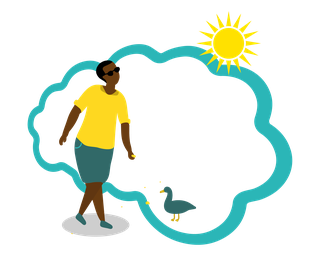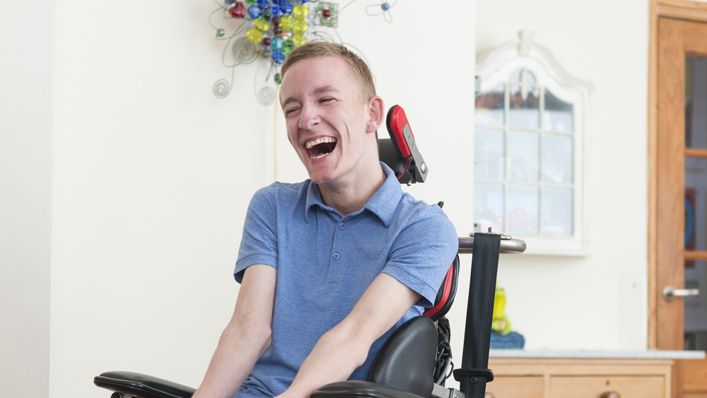Facing your fears
When we are afraid of something, whether it's a fear of dogs or public speaking, it can be tempting to avoid it.
Although this might bring relief in the short term, avoiding situations can make them harder to face up to and mean that our fears grow.
If instead we gradually expose ourselves to situations we fear, we can start to overcome them and feel more in control. This is sometimes called exposure therapy.
These 6 steps can help you to try this out for yourself.
Video: Facing your fears
The tips in this video will guide you through a process to help you gradually face and learn to overcome your fears in a structured, strategic way.
Steps to help you overcome your fears

1. Think about your physical feelings and behaviours
When we are faced with our fear it can be hard to figure out what is really going on.
When you are feeling more relaxed, take some time to think about the way you feel physically when you are afraid and how this makes you behave.
For example, if you fear taking public transport, you might notice that you feel panicked, hot and shaky. Or maybe you think about what could go wrong, so you get off before your stop or you avoid public transport altogether.

2. Change the way you see fear
Understanding why we feel a certain way can make it easier to manage things when we become afraid.
You may already know that the physical and emotional symptoms of fear can actually help to keep us safe in dangerous situations by making us more alert to potential threats or preparing our bodies for action. This is the "fight or flight" response.
For some of us, this response may be heightened or over-sensitive, which can lead to feelings of fear in situations that are not really dangerous, like when taking public transport or travelling in a lift for example.
The best way to overcome this fear is not to avoid these activities but to gradually expose yourself to them.

3. Break down and rate fearful situations
Think about which situations involve your fear and how difficult each one is to face. Try rating them from 0 to 100, with 0 being not difficult at all and 100 causing the most fear.
For example, taking the bus for a couple of stops with a friend might be a 10, but taking the bus for a couple of stops on your own might score 50.
Make a list of these situations in order of the least to most difficult.

4. Start with the easiest
Now you have rated your situations, you can begin working through them.
Starting with the lowest-scoring (least-difficult) one, begin facing your fears by putting yourself in the situation that you find uncomfortable.
This will likely be tough at first but do your best to stick at it and confront the difficulty.
Carry on putting yourself in the situation until you rate your fear as having reduced by half. So if it scored 10 on your list to start with, keep going until you would rate it a 5.
You should notice that the more times you face a fear, the less scary it becomes.

5. Allow yourself to feel the fear
When confronting your fears, it's important to allow yourself to feel worried or scared without relying on distractions. This can help prove to yourself you are able to cope.
So if there are things you would normally do to distract yourself – like playing with your phone or seeking reassurance from others – try to face the situation without doing these.
You might still want to run away from your fear when you first try this technique, but it will get easier as you keep going.

6. Work your way up – but don't rush
Once your fear has reduced by half, you can move on to the next situation on your list. Over time you will be able to work your way through each one and gradually overcome your fears.
This may take some time to do, especially when you begin reaching the more difficult situations, so do not be discouraged if some things take longer than others.
Remember that every time you put yourself in a situation you find difficult, no matter how big or small, it's a step towards reducing your anxiety, feeling more in control and overcoming your fears.
More self-help CBT techniques you can try

Tackling your to-do list
It might feel like a relief to avoid things when we're not feeling our best, but this can make a low mood harder to shift. See some tips you can try to tackle your tasks, build more structure into your life and find a better balance.
Find more ideas to try in self-help CBT techniques


